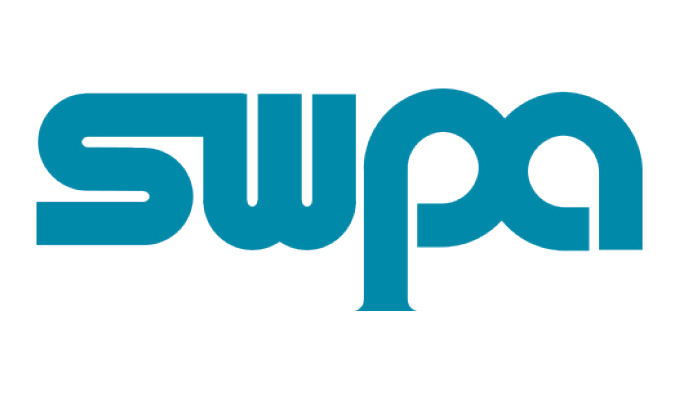By SWPA Executive Director Adam Stolberg and Jeff Boling,
Ebara Pumps Americas Corporation
Ragging and clogging are persistent problems in wastewater streams, which can cause backflows, seal leaks, and motor or pump damage, not to mention costly downtime and repair expenses. Consumer cleaning products labeled—or, in many cases, wrongly presumed to be—“flushable” only compound the issue. Since these products have proven so popular and consumer behavior is unlikely to change, the burden falls on wastewater treatment professionals and pump manufacturers to ensure the stream flows steadily, even when wet wipes, disposable mopheads, and the like threaten to bring an entire wastewater system to a halt. Below, SWPA Executive Director Adam Stolberg and Jeff Boling of Ebara Pumps Americas Corporation discuss how to take on this challenge.
Not everything that consumers deem “flushable” is suitable for a wastewater system. What are some of the most common offenders and what dangers do they pose?
Wet wipes are the most common “flushable” offender. Wet wipe advertising has made these products extremely popular. However, many of these wet wipes are not flushable. Product labels for most of these products define the misunderstood or never-read guidelines.
- No more than one wipe per flush.
- Wet wipes should not be flushed if fats, oils, and grease will also be present in your collections system.
Most consumers are unaware of what occurs after they flush, which is the start of an elaborate journey through the collection systems. The definition of “waste” is changing every day including new changes resulting from the COVID-19 pandemic, which brought new waste stream items such as masks, gloves, and other personal protective materials. These items are littered across the landscape and will eventually make their way into a collection system during a future rain event.
Consumers may not think their individual use can harm a wastewater system, but how serious can ragging and clogging become?
It only takes a few wipes or rags to clog a pump. One person can cause the clog that completely shuts down a pump station. Once the clogging starts, it affects the hydraulics of the entire wastewater system. These stoppages cause overflows that spill the waste out into the streets and into the public. These hazards go unnoticed to the general public, who unfortunately do not understand what’s really in those flood waters their kids are playing in. The danger to public safety is real.
How widespread is this problem and what can our industry do to combat it?
All wastewater systems are victims to this modern waste or “flushable” mentality. As an industry, we must do our best to educate consumers on the consequences of disposing of trash and wipes into the collection systems. Positive changes start with education. Seeming inconsequential actions by consumers drive up wastewater transfer and treatment costs and negatively impact the environment. The costs often have significant impacts on the budgets of both small and large municipalities. These costs can result in the delay of repairs and upgrades that are needed to maintain everyday operations.
Have “shelter in place” and “work from home” orders placed a new stressor on municipal systems?
Prior to the pandemic, municipalities experienced the highest flow rates after 3pm and on weekends. During the pandemic schedules shifted and municipalities are seeing higher flow rates throughout the day. These municipalities are adding inventory to their pump stock and adding labor support to cover the increased demand for hands-on coverage.
In addition to the changes in the waste stream, these municipalities require skilled operators to manage the collections systems. Most municipalities rely on trade shows conferences and seminars to gain insights into enhanced and new methods and technologies. This training is crucial to operating efficiently and effectively. The COVID-19 pandemic has delayed or cancelled most of these events in 2020 and early 2021.
What are some of the options municipalities are adopting to face the new normal? This doesn’t appear to welcome a one-size-fits-all solution.
Their demands change daily depending on rain events, school schedules, and unscheduled breakdowns or maintenance needs. Some municipalities are choosing to repair and unclog pumps as needed, rather than investing in new pumps or other technologies. In other areas municipalities are planning for the future and choosing to upgrade lift stations with new pump technology, trash baskets, advanced controls, and many other solutions. Each municipality, and really each lift station, requires a tailored approach.
Do you foresee this problem growing? And, if so, where is technology headed to prepare for it?
Unfortunately, with the new flushable products available to the public, the impact on the waste streams will likely never subside. New solids-handling pump technology will continue to be developed to keep up with the stringy waste demand. New controls technologies will continue to be developed to ensure that the systems are being operated as efficiently as possible. Through organizations like SWPA, pump manufacturers can play a vital role in educating municipalities on best practices for operating their wastewater collection systems.
MODERN PUMPING TODAY, May 2021
Did you enjoy this article?
Subscribe to the FREE Digital Edition of Modern Pumping Today Magazine!



